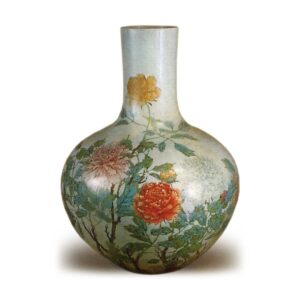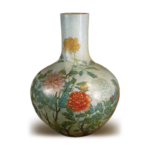
A type of porcelain overglaze painting. Also called soft color. An opaque coloring technique invented in the Kangxi and Yongzheng periods of the Qing Dynasty in China (1662-35), it was perfected during the Yongzheng period and continued into later periods. By the Jiajing (1522-66) and Wanli (1573-1620) periods of the Ming dynasty, five-color overglaze painting had developed, and each color was freely used to create a pictorial expression. The transparent five-color paints were called “hard colors,” while the opaque powder paints of the Yongzheng were called “soft colors. Soft colors are enamel-like pigments that have reached the ultimate level of porcelain overglaze painting techniques, allowing the brush to move freely just like a real painting, and giving a soft and warm feeling. The technique also allowed the artist to freely adjust the colors, which was a great improvement over the previous five-color technique. However, the end result was a trend toward unnecessarily delicate and skillful techniques, and the lack of progress in the use of substrates and glazes, and in general, the beginning of a regression.








